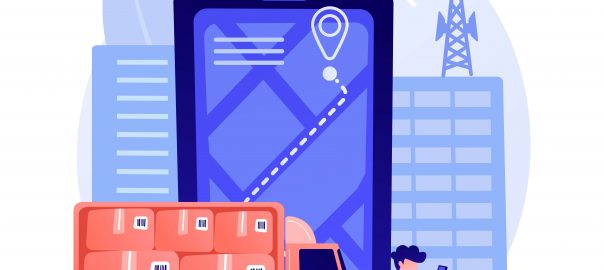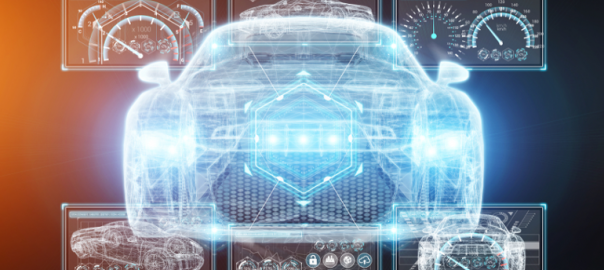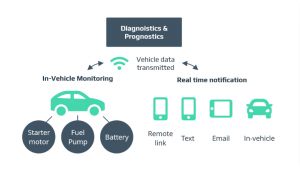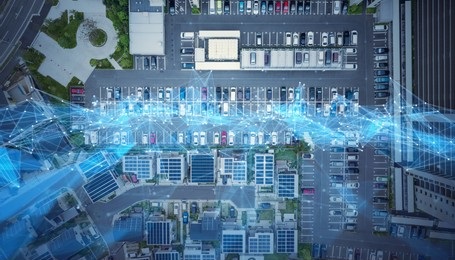Introduction:
With the increase in vehicular traffic in the urban landscape, authorities’ world over are grappling with parking issues. Such is the importance of parking spaces these days that parking convenience decides the footfall of say a movie theatre, mall or for that matter any public space. Convenient smart parking spaces come at a cost and are the most common area for conflict for urban planners, architects, builders and civic authorities.
With space at a premium and a burgeoning population, the pressure to find a solution to this growing problem is immense on the stakeholders. The question that automatically arises is – Can IT solutions if not eradicate but help ease out the parking issues.
We look at some of the ways IT can help develop smart parking solutions which has helped in sorting out the parking issues.
Satellite Parking Planning:
One of the solutions which is gaining momentum to solve the Parking conundrum is using Satellite imagery to solve the parking issue. Now Satellite imagery isn’t enough to solve the problem on its own. It has to be integrated with high resolution imagery and machine learning to spot vacant parking slots.
How this generally works is collecting images from Satellite and using specific satellite based algorithm to enhance the image resolution. Then, through a set of machine learning applications vacant parking slots are detected.
Challenges:
First and foremost is the High Resolution Satellite imagery and second is the Cost. Without high resolution images and cost effectiveness, this won’t be a fruitful venture.
As the quality of images varies from satellite to satellite. The effectiveness of Satellite Parking Planning will depend a great deal on pairing the imagery (both low and high resolution) from various satellites and quantify those in machine learning algorithm.
The interface needs to be customised as different agencies and clients will have different UI/UX interface requirements. There will be instances where the Satellite images might not be available, then drone images or photographs from aerial photography can help to fill the gap. Create coherency between Satellite data and physical maps.
Solutions:
Creating a technical architecture for sourcing and processing satellite images with Artificial Intelligence along with Deep Learning to improve accuracy. Form partnership with companies that specialises in particular skill set to lower the cost.
‘The Research Institute for Housing America, part of the Washington, D.C.-based Mortgage Bankers Association, used satellite imagery and tax records this year to tally parking space totals in different – sized U.S. cities. It determined that outside of New York City, the parking densities per acre far exceeded the population densities’ – Excerpt from People Over Parking published in Oct’18 by American Planning Association.
The European Space Agency teamed up with an Austrian based start-up Parkbob to provide Satellite Driven Parking Services. Satellite Parking Planning will be an important milestone for developing advanced digital last-mile solutions and a great proponent of how public-private partnerships can aid implementation of new technologies in the market.
1. Access Point:
Access Points or gateways detect the passage of vehicles in and out of the parking zone in real time. This gives the authorities and the drivers accurate information on the accuracy levels of the parking zone at all times.
The Real Time information is important, as it saves the driver the hassle of searching for a parking space. Moreover, this leads to the ripple effect of less congestion at parking lots, reducing fuel consumption and carbon footprint. The sum total of all this is Less Pollution. Thus, Access Points enables transport regulators to manage public parking zones optimally.
How does the system work?
Access Points receives data from the sensor nodes and send them to the data processing centre in real time. From a hardware point of view, the characteristics of the Access Points and Sensor Nodes are similar, except that unlike sensor nodes, they don’t perform the function of packing and unpacking of the data.
The Access points communicate with the sensor nodes using IPv6, the acronym for 6LoWPAN (Low Power Wireless Personal Area Network) communication protocol. If there is a node in the data centre acting as a border router, communication between the base station and the gateway will be done by 6LoWPAN. However, if the gateway is located very close to the data centre, a RS-232 (Recommended Standard 232. It is one of the oldest yet popular communication protocol for transmission of data over medium distances.
2. Parking Sensors:
Sensor based parking concepts are popular because they are cost effective & non-intrusive system of managing parking spaces. It’s based on wireless networks of photoelectric sensors that are deployed at various access points on the roads especially the entry and exit points.
The sensors detect the passage of vehicles and relay the information to the data centre. For instance, this gives accurate information on the number of vehicles and the occupancy levels in real-time. Thus, the data centre in turn relays the information to the drivers and authorities. This facilitates the former in finding an appropriate parking space and the later to take steps to control traffic in case of congestion.
Smart Parking Systems typically have pavements with built in sensors as well as overhead vehicle detectors for monitoring the availability of the parking spaces. These sensors use advanced algorithms for vehicle tracking. They also have the ability to determine if the location of a stationary vehicle corresponds to that of a parking facility or not. Since the sensors provide real time overview of parking space occupancy, Law enforcement bodies can use the service to get data on parking violations. They can check if a car is parked on a lane reserved for emergency vehicles or a cycle path.
As mentioned earlier Sensors are a popular choice amongst authorities and stakeholders for smart parking facilities in urban areas. Since the subject is a wide ranging one, where each section can be a blog in itself, we will delve on the gist of the various types of sensors used to mitigate the parking issues just to get an insight.
Types of sensors:
• Vision systems – are based on digital sensors embedded within industrial cameras and optics. They help to acquire images. A sensor capable high definition camera (usually Raspberry Pi V2 camera is preferred) along with the revolutionary OmniBSI technology (high sensitivity in low light, low cross talk (improved image resolution), and low noise), it can identify an automobile’s license plate, when the presence of a vehicle is detected in the parking space.
• Radar Sensors – These sensors generate 2D images with the help of artificial intelligence. In other words, the trained neural network synthesises the images displaying the status of the parking space. These sensors offer the option to use one powerful device to cover multiple vacant parking slots.
• Magnetometers – Use the surrounding magnetic field to detect vehicular movement. It comes fitted with RFID (Radio Frequency Identification) enabling on-street parking reservation.
• Ultrasonic sensors – Emits sounds waves at a particularly frequency to detect whether a particular parking spot is vacant. However, the effectiveness and accuracy of these sensors means that they are being incorporated in many of the smart parking solutions. Ultrasonic sensors have evolved thanks to continuous technological advancements. With LPWAN (low power wide area network) technologies such as LoRa (connects sensors for transmission of parking space status), ultrasonic sensors have high detection accuracy.
• Infrared sensors(IR) – When an object comes closer to the sensor, the infrared light from the LED reflects off the object. This helps to trace it from receiver’s end.
3. Cloud Based Parking Systems:
The sensors detect the location data of automobiles and occupancy of parking spaces. This is transferred to the cloud gateway. From there the network server processes it. Above all, the drivers and automobile rental managers can access the data. This gives them an insight into the parking space status.
How does the system work?
Cloud Based Parking Systems use the web service for reading and sending data to the sensor network using Play Framework. The framework is based on web-friendly architecture. Built on Akka, Play provides predictable and minimal resource consumption (CPU, memory, threads) for highly-scalable applications using Java technology. Moreover, it’s a modular framework with integrated unit testing (it includes support for JUnit and Selenium). It allows static methods, non-blocking asynchronous communication, and simple corrective maintenance.
The registration component consists of a database to store information on registered users, the number of sensor networks deployed, parking spaces available, etc. Due to its multiple usage and versatality PostgreSQL is mostly used to set up the database. PostgreSQL functions include transactions, referential integrity, views and a multitude of features. It also incorporates Multiversion Currency Control—MVCC—which allows other clients to access it without the need for locking. These features are suitable for systems that need to handle large amounts of data and a high number of concurrent users accessing the system simultaneously, as will be required by the proposed system.
Final Thoughts:
Smart parking solutions will have a significant impact on the urban life. It will aid the citizens and the Enforcement authorities in the following way:
1. Offer real time monitoring of the parking spaces.
2. Provide better safety and control for businesses and law enforcement authorities.
3. Optimize space and time in a hectic urban environment.
4. Predict the flow of vehicles by analysing parking routines at public spaces
Smart Parking Solutions will shape the landscape of the mega cities in the near future. If you too are looking for Smart Parking Solutions, Mindfire Solutions can be your partner of choice. We have significant experience over the years working with sensor and cloud based applications. We have a team of highly skilled and certified software professionals, who have developed many custom solutions for our global clients over the years.




